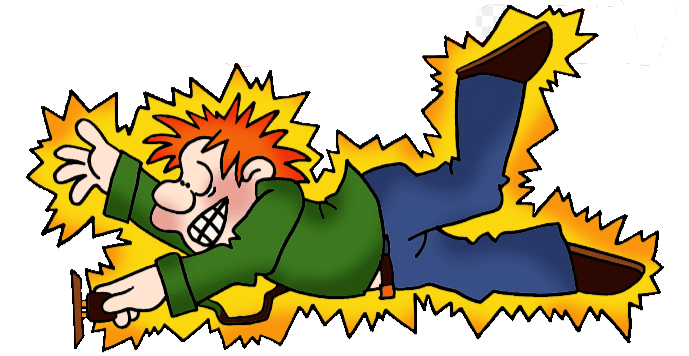Myth 4 - The extent of surface burn determines the extent of the injury. Unfortunately, skin findings can be misleading.
Myth 5 - The pathway the electricity takes through the body predicts the pattern of injury. It is helpful to be able to see evidence of the path that the electricity took (ex, from toe to hand), but once again, this can be misleading. Myth 6 - All patients with electric injuries require 24 hours of cardiac monitoring. Most patients who arrive to the ED without having had an arrhythmia and who have a normal ECG with no symptoms do not require prolonged monitoring. Myth 7 - Cardiac monitoring and further testing is always required for TASER injuries. There have been deaths noted with TASER injuries, but these have all been associated with patients who had "excited delirium" -- PCP and TASER is a bad combination. Myth 8 - Victims of lightning injury should not undergo prolonged resuscitation. Lightning victims can have meaningful recoveries after prolonged resuscitation. They can even present with Fixed and Dilated pupils. Do not tell EMS providers to pronounce the victim in the field. Continue to resuscitate and bring them to the ED to further assess.
0 Comments
Your comment will be posted after it is approved.
Leave a Reply. |
Archives
August 2018
Categories
All
|

 RSS Feed
RSS Feed
